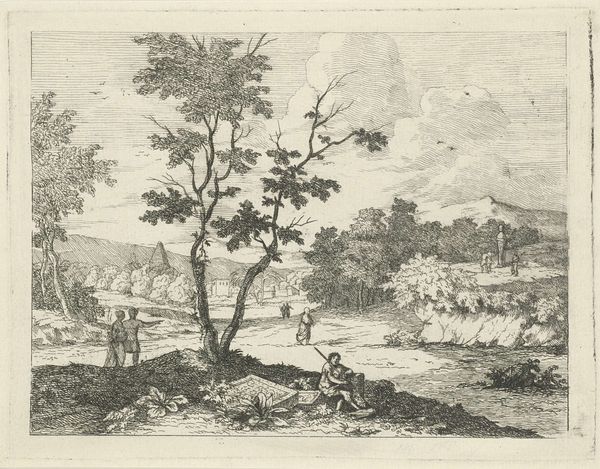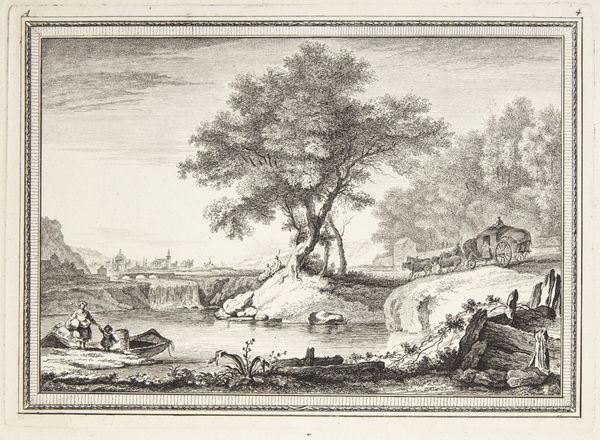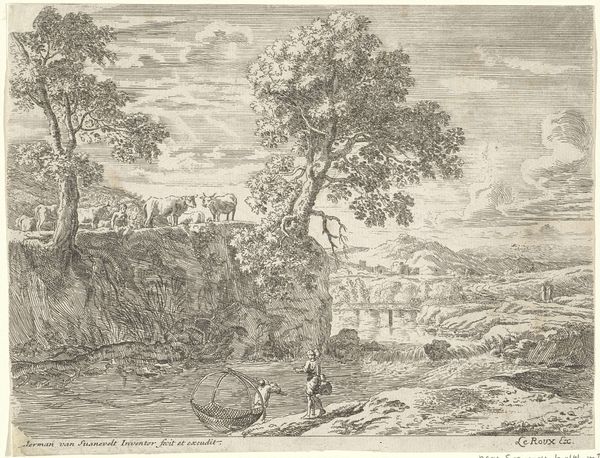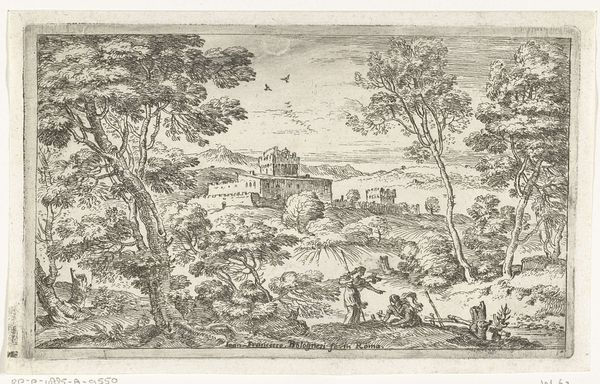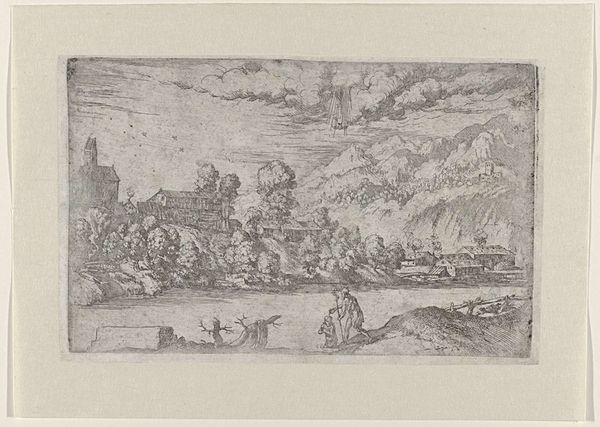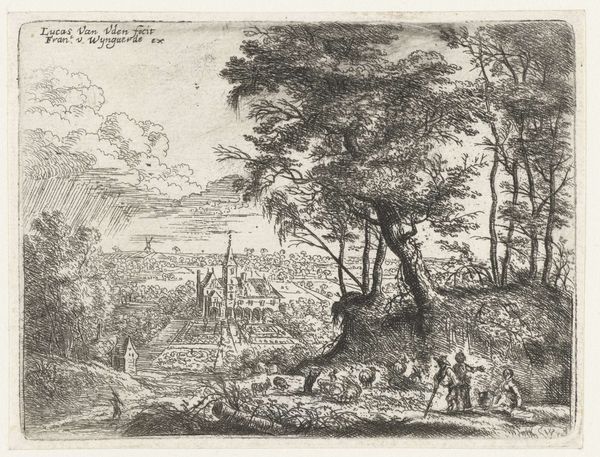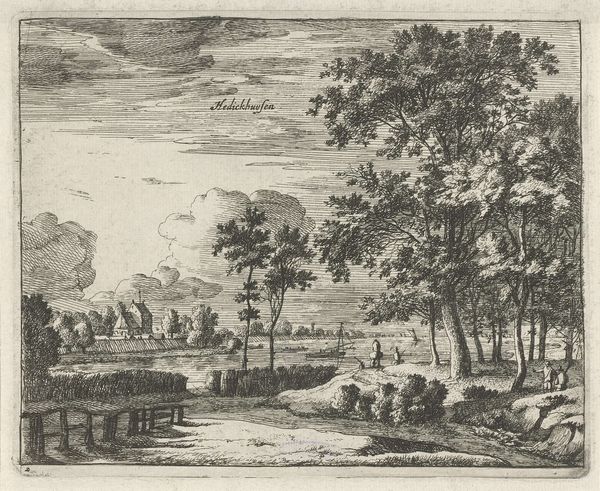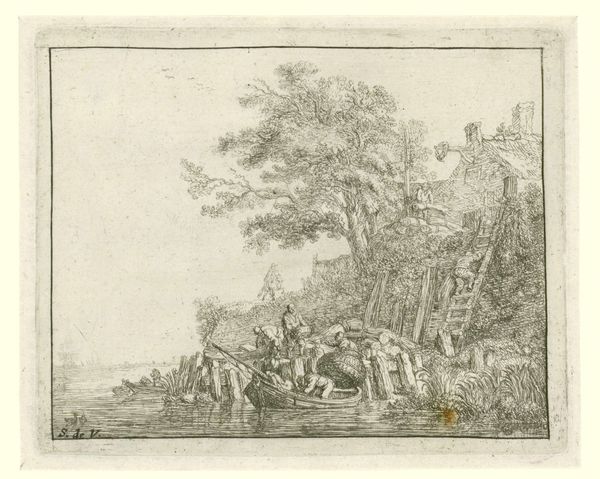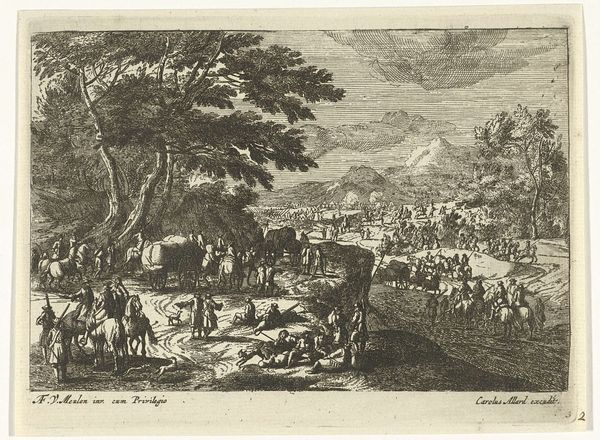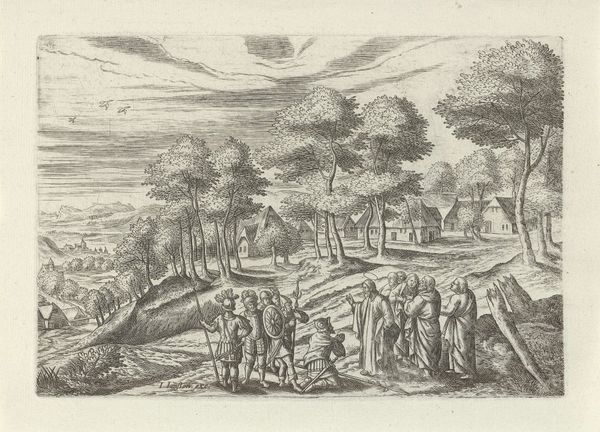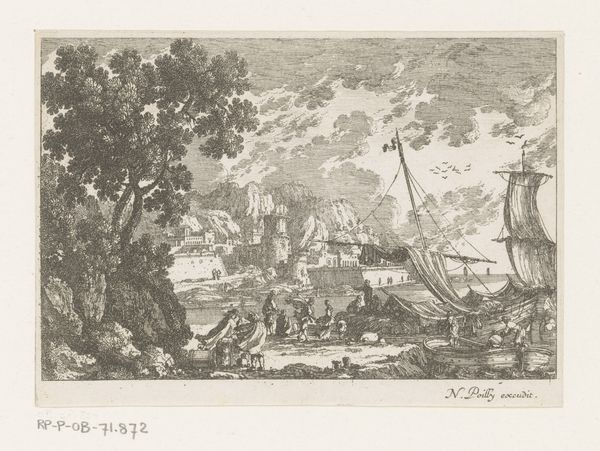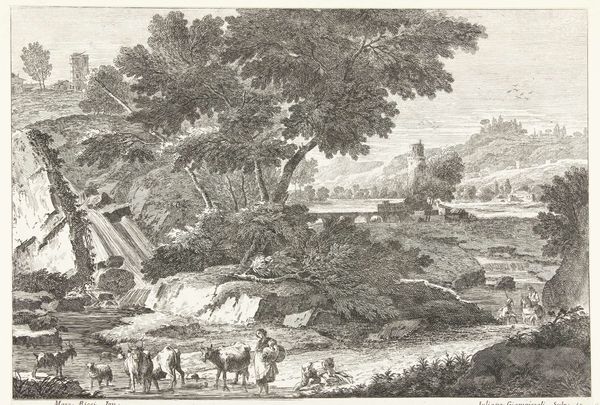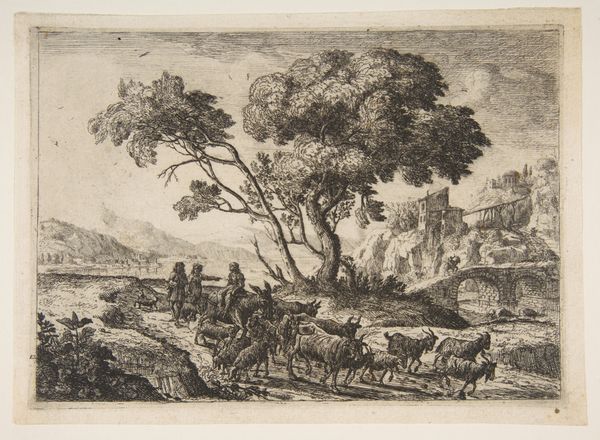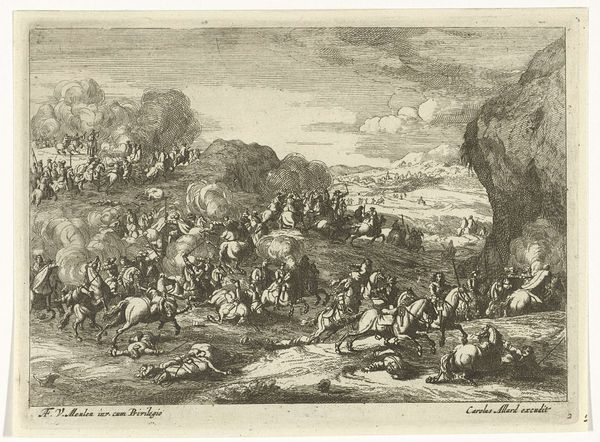
Dimensions: height 89 mm, width 106 mm
Copyright: Rijks Museum: Open Domain
Editor: Here we have Simon Fokke’s “Spanjaarden verdreven uit Vlissingen, 1572,” created between 1782 and 1784. It’s a pen and ink drawing, almost like an etching in its detail. I’m struck by how much detail is packed into a seemingly small scene. What story do you see being told through the materials and techniques used? Curator: The image’s narrative is explicitly historical, yet it's crucial to look at the work's physical existence: pen, ink, paper, and the etching process itself. The controlled, reproducible nature of etching suggests a mass audience, and the drawing's purpose shifts from unique artwork to disseminator of a specific nationalistic viewpoint. Consider how the *making* of the image enabled its circulation as propaganda. What does the *reproduction* say about consumption and the artist’s role? Editor: So, the *process* is actually the point here? It becomes almost less about art and more about information distribution? Curator: Precisely. The line work mimics the graphic quality of printed text of the time, lending an air of objectivity. Look closely at how Fokke portrays the Spanish, and think about the intended consumer of this image, perhaps nearly two centuries after the actual event! How does labor feature within this work’s purpose and legacy? Editor: It makes you wonder who the work was created for. To think about this piece as a commodity and how the labor involved contributed to creating national identity through widespread visual narratives is not something I considered right away! Curator: Agreed, viewing art this way changes everything! Thinking about production, distribution and reception can open up art to a more tangible form of cultural conversation.
Comments
No comments
Be the first to comment and join the conversation on the ultimate creative platform.
